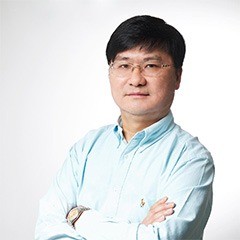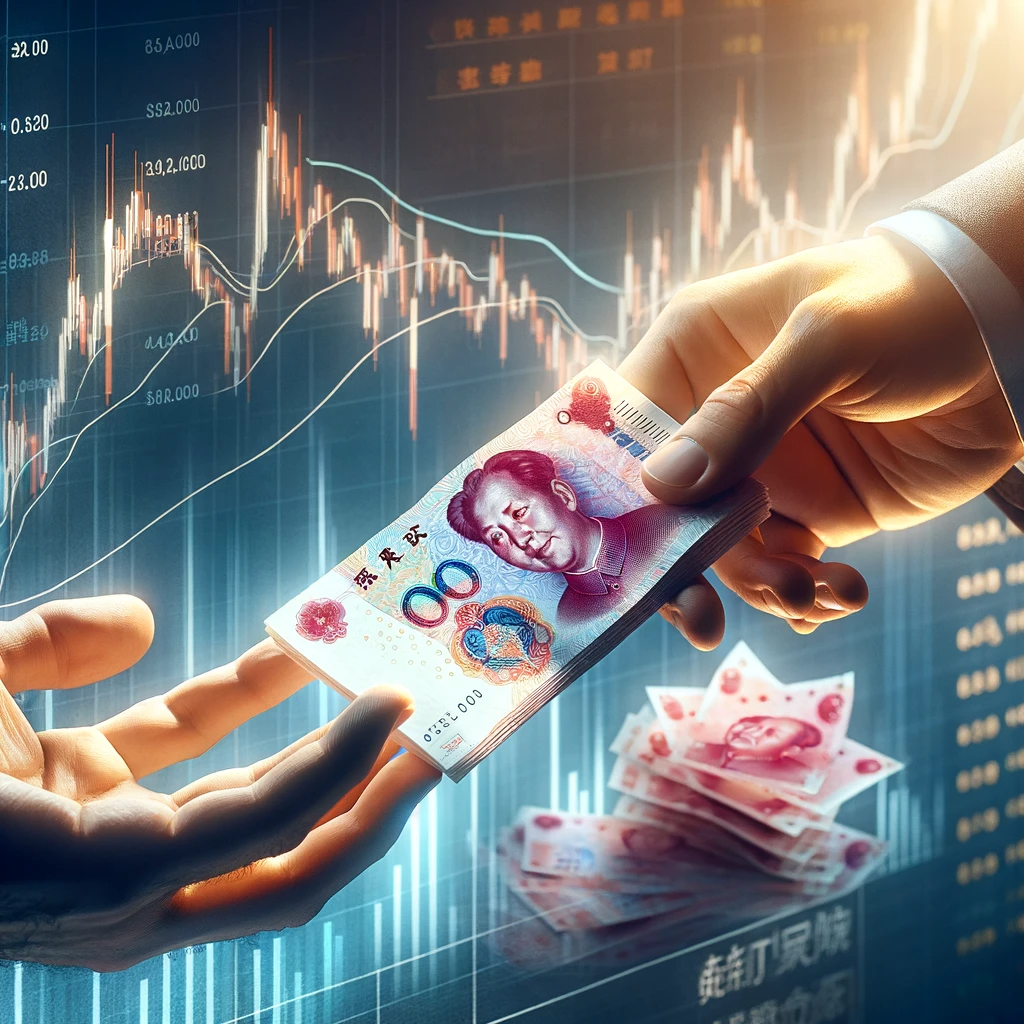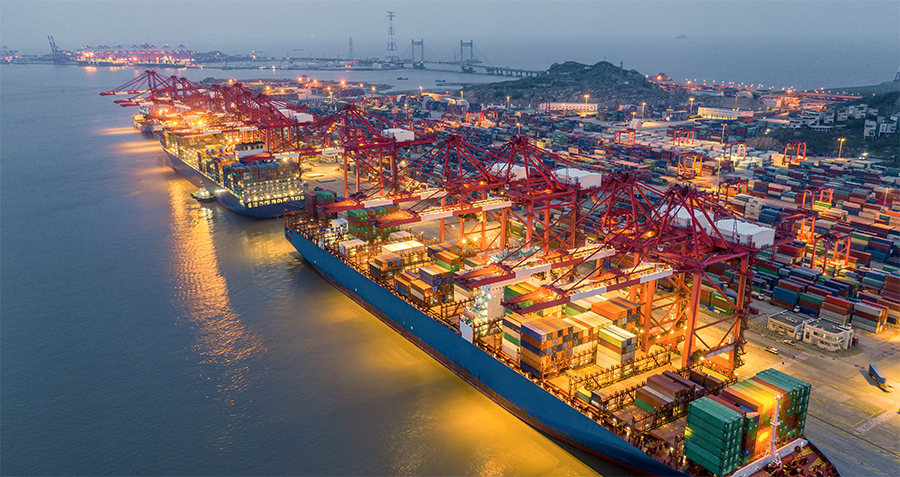Since the invention of the first computer, digital and information technologies have been in a constant state of development. Technological advances have not only brought about improvements in life and work efficiency, but also created a new economic model and a research topic—the limitless supply economy.
In his book, Limitless Supply: New Economy in the Digital Era, Cheung Kong Graduate School of Business (CKGSB) professor Zhou Chunsheng discusses the exact meaning behind the term limitless supply, the impacts of limitless supply on business and financial markets and the impact of the limitless supply economy on GDP.
Excerpt from the Foreword
A new economic field is developing in the rolling torrent of China’s economic transformation, and new technologies, products and sectors—particularly driven by smart technologies and digitalization—are emerging.
In this new era, the corporate, financial and even political sectors are in urgent need of a set of new economic theories to help interpret the various new phenomena and the issues they create. These theories can also aid in understanding and predicting new economic and commercial development trends, as well as guide industry-specific decisions on scientific and rational investment, production, R&D, marketing and industrial development.
For a long time, economics has been a discipline that studies the laws of economic operation and resource allocation on the premise of resource scarcity. According to this assumption, since resources are limited, and production must consume resources, output is limited by supply, creating product scarcity.
But in the new, increasingly digitalized economic era, this is quickly changing. Some products remain limited in production and supply, but there are also a growing number that are not constrained by such limits. Microsoft’s Windows operating system, Apple’s iOS, Tencent’s WeChat, and Baidu’s search engine are all typical examples of limitless supply products.
In the same way that it is not persuasive to use Newtonian mechanics to explain particle movement, it is even more inaccurate to analyze and understand the concept of limitless supply economics using traditional economic frameworks that are based on ideas of limited resources and limited supply.
Therefore, the importance of establishing a new theoretical system that subverts traditional economic thinking is self-evident. This is especially true at a time when the smart economy, digital economy and other new economies and business models are booming, and limitless supplies are becoming more common.
But creating such a system is not easy. Limitless Supply: New Economy in the Digital Era is the result of several years of consideration and revision by the author, and the book analyzes the basic characteristics of limitless supply products, and compares them to the production and operation of limited supply products. And in terms of China’s current economic development, the book argues that the contribution of the new economy, including its scientific and technological progress, has been seriously underestimated.
The core objective of the book aims to construct a preliminary, simple, but relatively complete theoretical framework for the economics of limitless supply, and to use it to interpret important phenomena in the new economy and explain the behavior of enterprises operating in its sectors.
This includes analysis of demand and pricing issues for limitless supply products and the discussion of revenue models and derived benefits, helping to understand how such products, such as software, data and online games can be priced in a balanced way. It also aims to solve the mystery of how so many of these new products can operate on a zero-revenue, or even negative-revenue, model.
In addition, the book points out the essential differences between limitless supply product producers and their limited supply counterparts, in terms of growth mode, growth rates, competitive strategies and the importance of user stickiness.
New economic era
Over the years, the Chinese and global economies have changed dramatically, both from a financial and technological point of view. Firstly, the rise of the digital economy and smart technology development, which have provided more new products, services and business models, have coincided with the rapid slowdown in China’s GDP growth rate.
Second, we have seen the appearance of new economic phenomena. For example, it is logical to assume that with technological progress and the development of new industries, products and business models, we would have seen faster growth in fixed-asset investment. But the reverse has been true in China, with annual growth rates dropping down to 5% from 20% a decade ago. Theoretically, technological progress should also increase productivity, but again, there has not been a rapid increase in total factor productivity—the relationship between output in real terms and the inputs involved in its production—and compared with 20 years ago, the growth rate of total factor productivity has actually declined.
New incrementalism
When we talk about changes in the economy, the process of rapid industrialization is basically coming to an end, and the growth rate of traditional industries is slowing. In terms of the laws of economics, final consumption expenditure is the ultimate gauge of economic development.
Engel’s Law states that the higher the income in an economy, the lower the share of food expenditure should be. By extension, the higher the income, the lower the share of rigid demand—also known as the stock sector—in the overall GDP. In China, there are signs that many areas of traditional industries are becoming saturated with capacity and there are relatively few opportunities for expansion of investment with limited incremental development space.
There are obviously some opportunities available, but in order to develop further, we have to find other opportunities for incremental improvements—usually through product innovation—to act as growth drivers. The technological progress, digitalization and smart development within the country’s economy over the years have brought about many of these improvements, including new business models, products, services and meeting changing consumer demands.
Emerging industries are relatively rich in incremental opportunities, but they are asset-light industries, with high levels of asset intangibility. These industries do not require large-scale fixed-asset investment in things like plants or equipment, so the presence of such investment, which has played a role in the rapid growth of traditional industries, is falling.
But in order for these new industries to act as successful economic drivers for China, there are two key requirements. The first is scientific and technological substitution. In core fields, there is a need for China to fill the gaps in its knowledge base and develop original technologies to avoid being pinched by large global powers.
The second relates to consumer demand. If China wants to be able to rely on its domestic economy, consumer demand must be increased in order to create more domestic capacity. Without the impetus of consumption, more investment will inevitably result in overcapacity. Moreover, if consumption does not rise, enterprise investment will become increasingly economically inefficient and ultimately enterprises will lack the incentive to invest.
Therefore, upgrading consumption in addition to demand should be a major focus.
Finite to infinite
Many of these macroeconomic issues are related to the concept of limitless supply, which should act as the central tenet of any new economic thinking. But what exactly is limitless supply?
In April 2023, the Party Central Committee and State Council issued a document proposing improvements to the production factor market, which has historically been focused on business investments in land, capital and labor. Today, there is a growing need to add investments in smart technology and digitalization to this list.
Supply limitations are the key difference between the traditional production factor market and the new additions. While land value, capital and labor will continue to depreciate or deplete, data, once produced, will always exist and can be reused multiple times, if not infinitely. Because of this limitless supply, there is little cost in converting these elements into a product, there is also no risk of a supply shortage, nor an oversupply. For example, it is impossible to have a surplus of Microsoft Office software. Similarly, WeChat and other such apps can be supplied by the company to anyone that requires them.
This is fundamentally different from the limited supply of cars, houses, bread and milk in the traditional era. Because of this, enterprises will undergo radical changes in product pricing, business model design, competitive strategy and corporate growth, and these changes will have a direct impact on the entire macro-economy, affecting GDP statistics.
Challenging the norm
The idea of limitless supply is a complete reversal of traditional economic thinking, challenging the assumptions that make up the discipline. It is no longer possible to make decisions based on the assumption of scarcity because data and digital technologies, whether as a factor or product, have no scarcity. Limitless supply also challenges the idea that market forces ultimately put supply and demand in equilibrium, due to the fact there can be no surplus, in its original meaning, nor oversupply issues.
Similarly, traditional economic theories often use the “production function” to characterize the input-output relationship that makes up both enterprise and national economic growth. Economic growth theory is based on a certain production function, both at the macro level and at the micro level of enterprises. Traditional finite goods producers, no matter how strong the demand is, must increase their production capacity in order to get bigger. Limitless supply product producers do not have a simple production function, and because the product supply is unlimited, growth is entirely dependent on demand-side growth. This means that the original theory of enterprise growth that makes up economic growth theory, should also be reconsidered.
Intangibles and assetization
Limitless supply will also require major changes to the relationship between business and financial markets, and customers. Many limitless supply product producers are now what would be considered asset-light companies—with few fixed assets such as equipment—but they do have a large amount of intangible assets. These intangible assets will become an important part of the development of the new economy, and also explain some of the decline in the growth rate of fixed-asset investment.
Additionally, the growth scale effect of limitless supply is mainly reflected in user numbers, meaning the customer is now the most critical resource for these companies, and should therefore be regarded as the core asset of the enterprise.
In limited supply sectors, customers often engage in once off transactions with suppliers, on the other hand, limitless supply enterprises and users are beginning to develop mutual long-term relationships. By using an app, users constantly create a variety of value and income for the supplier. Traffic realization is where the enterprise uses the customer to create income for themselves. This type of customer has particular characteristics, and utilizing them properly is called customer assetization. Properly done, this will have a major impact on the nature of new economy businesses.
Financial transformation
The increase in asset intangibility and the assetization of customers will have a significant impact on valuation models. If the customer is now an asset, then we must consider a new financial valuation model. For example, this brings into play a “burning money” model as an investment tool, where businesses can “burn money” to obtain customers, which is akin to a traditional business making investments to obtain land.
Of course, the relationship between customer acquisition costs and customer value should be considered. Companies with light or intangible assets do not have much to offer for collateral in the traditional sense, so borrowing and financing are often limited, and new economy enterprises and technological innovation rely more on direct equity financing.
In this new economic era where intangible assets become the core growth drivers and customers become the assets themselves, we need new accounting methods to provide more accurate data for national economic accounting.
Limitless opportunities
It is clear that the new business models brought about by the increasingly intangible nature and limitless supply of assets make economic accounting more difficult. When combined with the effects of product substitution brought about by technological innovation (e.g. cell phones replacing cameras and film), it would seem that there has been a major underestimation of these new-era businesses’ impact on the economy.
There is no doubt that there is an opportunity for a shift in economic theory to suit the rapidly changing nature of a world increasingly limitless in supply.
To find out more about the book, please visit: https://english.ckgsb.edu.cn/faculty/zhou-chunsheng/






















